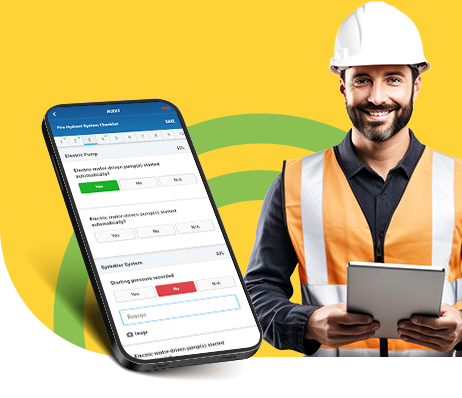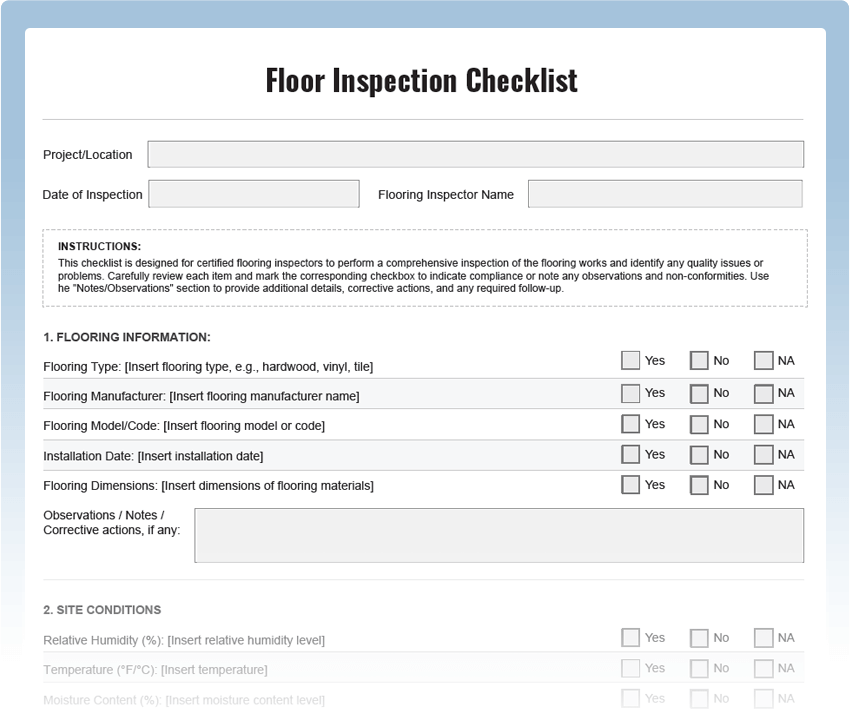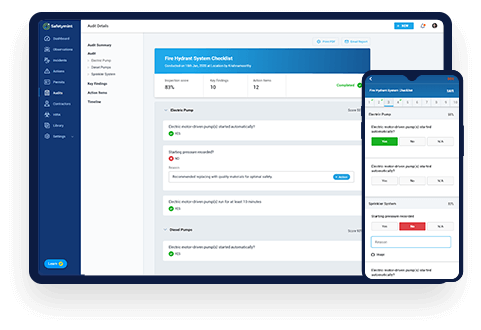Floor Inspection Checklist
Maintain safe and well-maintained floors in your facility with our comprehensive Floor Inspection Checklist. This free PDF template covers all critical aspects of floor safety, cleanliness, and maintenance, empowering you to identify potential hazards, address issues promptly, and create a secure environment for all occupants.
Digitize this Checklist on Safetymint
- Create unlimited, customized checklists
- Add Actions, with automated reminders
- Works seamlessly with or without internet
- Access via web browsers, mobile or tablets

What is a Floor Inspection Checklist?
A Floor Inspection Checklist is a systematic tool used to assess the condition and safety of floors within a building or facility. It includes a series of checkpoints designed to inspect various types of flooring, from tiles to carpets. Regular floor inspections are essential for preventing slip and trip hazards, identifying damage or wear, and ensuring compliance with safety regulations.
Key Areas to Inspect on Floors:
- Surface Condition: Check for any cracks, holes, or uneven surfaces that may pose tripping hazards.
- Slip Resistance: Assess the slip resistance of the floor to prevent slip and fall accidents.
- Cleanliness: Inspect the cleanliness of the floor and address any spills or debris promptly.
- Floor Coverings: Check the condition of carpets, tiles, or other floor coverings for wear or damage.
- Transition Areas: Pay attention to transition areas between different types of flooring.
- Signage and Markings: Verify the presence and visibility of warning signs or floor markings.
Common Floor Inspection Findings:
Frequent issues found during floor inspections include:
- Cracked Tiles: Tiles with cracks or chipped edges that can cause trips or lead to further damage.
- Slippery Surfaces: Floors with inadequate slip resistance, posing slip and fall hazards.
- Uneven Floor Surfaces: Flooring with height differences, causing tripping hazards.
- Worn Carpet: Carpets with worn fibers or loose edges that can cause trips.
Floor Inspection Best Practices:
- Regular Inspections: Conduct routine floor inspections, especially in high-traffic areas.
- Prompt Repairs: Address any identified issues promptly and perform necessary repairs.
- Floor Maintenance: Implement a regular floor maintenance program, including cleaning and slip resistance testing.
- Educate Occupants: Inform building occupants about potential floor hazards and proper footwear.




